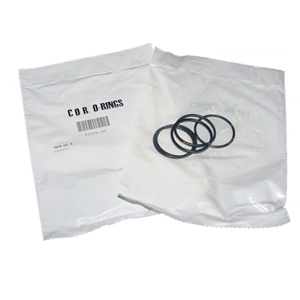When to Discard Your Stored O-Rings? Are your O-Rings Expired?
O-Rings are essential components as your machinery or equipment depends on them. Your machinery or equipment efficiency and performance are good only until the O-ring in it meets the quality standards and, it has not passed its expiration timeline or its useful life if stored improperly. A 7 years old never used O-Ring which is lying in your storage room, might not be fit to put under application use. This is because many factors play a role in the useful life of O-Rings and if proper care and attention are not given to these factors, the O-Rings will not be suitable for your machinery years later. At that time, the best thing you will be able to do is to dump them into the trash.

Factors affecting the Shelf-Life of O-Rings
There are several critical factors which must be taken into consideration while storing your O-Rings so that you can maintain their useful life and peacefully use them years later as per their expiration date. For example, a Neoprene O-Ring under a proper storage environment has a shelf-life of 15 years, but if these o-rings are subjected to UV radiations or heat when stored in the storage room, their useful life could become much less.
The factors that affect the shelf-life includes:
- Stress & Strain
- Humidity
- Light
- Radiations
- Temperature
- Ozone
- Contact with Different Elastomers
- FIFO
- Contact with Liquid and Semi-Solid Materials
- Contact with Dusting Powder
- Contact with Metals
- Elastomeric Seals bonded to Metal Parts
Proper storage of O-Rings not only increases their useful life but also reduces the chances of machinery downtime or injury to the workforce due to machinery or equipment failure.
To get more information on how these factors affect the useful life of O-Rings, visit our O-Ring Shelf-Life Resource Page.

O-Ring's Shelf-Life Depending upon the Elastomer Used to make them
As per the SAE AS5316 standards, the shelf-life recommendations of common O-Ring Elastomers is as follows:
- Unlimited: AFLAS™, Isobutylene Isoprene, Ethylene Propylene, Fluorocarbon, Fluorosilicone, Perfluorelastomer, Polytetrafluoroethylene, Silicone
- 15 years: Neoprene, HNBR, NBR, Polyacrylate
- 5 years: Polyurethane (depending upon the type), Natural Rubber
Calculation of O-Ring Expiration Date
The rubber industry uses old US military specs and current SAE Aerospace recommendations to calculate elastomer and O-Ring shelf-life in quarter-year units. So, the manufacturing cure date can occur anytime within 3 months, and the shelf-life expiration time does not start until after the first complete quarter. For example, if an O-Ring or elastomer was cured on Aug 19, 2019, and it would have its cure date established as 3Q19, the shelf-life expiration period won’t begin until Oct 1, 2019, that is until the start of the subsequent quarter month. Therefore, an O-Ring with 10 years shelf life would expire on Oct 1, 2029 (4Q29).
Even though it is said that shelf life begins with the manufactured date, and it can be maximized with proper packaging and if they are stored under proper environmental conditions, the rubber shelf life is not an exact science. It is very tough to attain proper storage conditions and meet all the required criteria under practical scenarios. So, depending on how close the proper storage conditions were met while storing the O-Rings, the shelf-life of O-Rings will vary.
To read more about O-Rings Shelf Life and how environmental factors have an effect on them, visit our O-Ring Shelf-Life Resource Page.
For any general or technical questions, you can always reach COR Manufacturing, and our experienced team will answer your questions.
